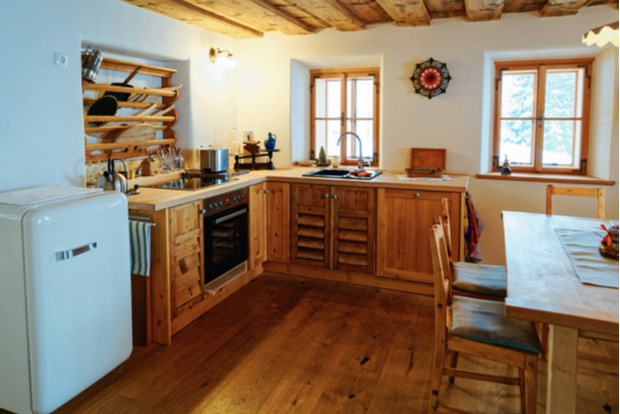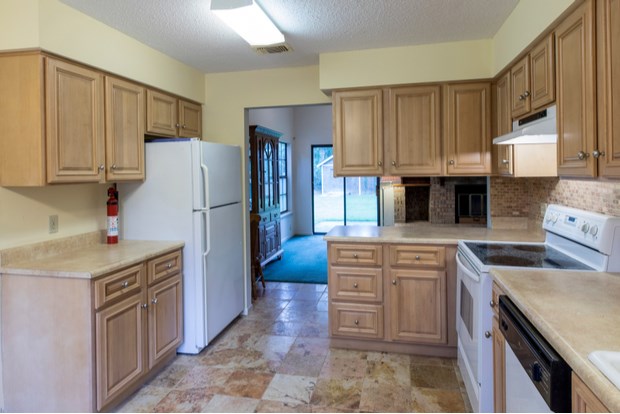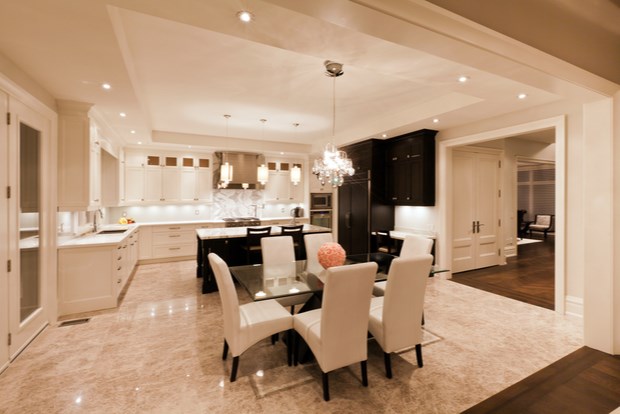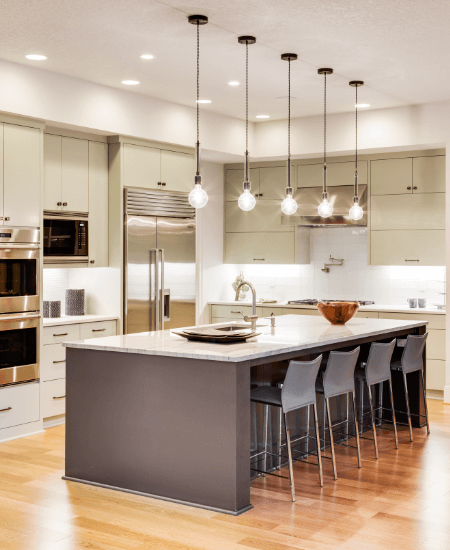Kitchen Flooring Types- Pros & Cons
The market is filled with tons of stylish kitchen flooring options, be it ceramic tile, hardwood or even natural stone. While as customers we usually get caught up in design, appeal, color, and other physical considerations. Upgrade your kitchen area with the right flooring option that provides maximum durability & comfort without compromising on style. The kitchen area is prone to more spills such as water, oil, wine, dishes, etc. A durable and efficient kitchen floor should be easy to maintain, clean & withstand the use over a course of time.
Some of the most durable kitchen flooring options available in India are Concrete, rubber, stone, tile, wood laminate, rubber flooring, and vinyl. It can be an overwhelming task to pick the right flooring option that meets all your needs. However, we recommend knowing the advantages and disadvantages of these flooring options will help you in better decision making. In this post, we will take you through 3 common types of kitchen flooring options in India, its pros and cons.
Hardwood
Wooden floors add a rustic classic look and warmth to any space. This has been a hot favorite for decades now. Since kitchens are high traffic areas, pick hardwoods over softwoods. The reason being, scratches and dirt are less visible comparatively. Shades like Oak, mahogany, ash, walnut, etc. are recommended. Another trending floor option is bamboo floors as they are eco- friendly, durable and appealing as well. Depending on your needs, you can get customized wooden floors and plies.

Pros:
- Can last for decades
- Looks attractive
- Has a higher resale value
- Can be refinished and polished
Cons:
- Difficult to clean
- Required periodic polishing
- Can crown or warp when exposed to water or high moisture content
- Can be noisy
Laminate
It duplicates the look of tiles and is economically affordable. If you are looking for a durable flooring option that has a higher resistance to stains, scratches and requires low maintenance, you should pick this. You can add padding beneath the first layer to make it a soft and economical solution. This is a good alternative to hardwood floors and has a wide variety of designs.

Pros:
- Affordable
- DIY friendly- comes with a click and lock floating installation system.
- Easy to install
- Wide variety of designs
Cons:
- Difficult to repair
- Requires proper moisture barrier arrangements
- Needs a special cleaner to maintain
Tile
It is not just visually appealing but is practically durable and easy to maintain. Owing to its reflective quality, it makes the space appear bigger. Ceramic, quarry, porcelain, marble are some of the popular tile options and not to forget comes in various designs as well. They no longer come just in square shapes. You can find huge rectangular tiles easily in the market. Owing to modern printing technology, it’s easier to duplicate the natural stone look for a lesser price.

Pros:
- Low maintenance
- Long lasting
- Remains unaffected by the moisture content
Cons:
- Customized marble tiles can be expensive
- When wet, the floor can get slick
- Repairing cracks is not feasible and can be expensive
Now, that you have a brief idea about the various type of soft kitchen flooring options, its time you decide on one. Connect with a professional flooring contractor and also stay tuned for your next post wherein we will discuss the various factors to consider while choosing a kitchen flooring for your home.










Post a Comment